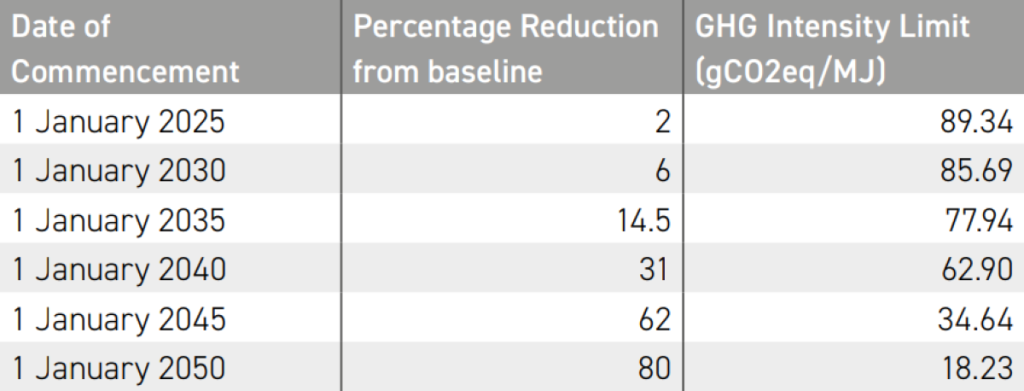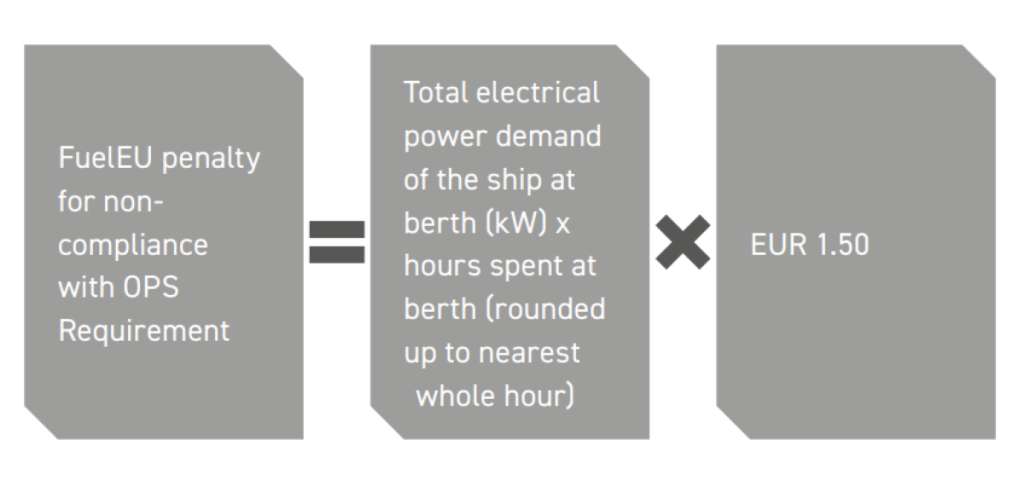FuelEU MARITIME REGULATIONS – USING LOW-CARBON FUEL TO REDUCE GREENHOUSE GAS EMISSIONS
Published: 21 November 2024
Updated: 12 February 2025
Update – 01 January 2025Please note that due to a delay in incorporating this regulation into the EEA Agreement, both Norwegian and Icelandic ports will be treated as third-country ports until further notice. The announcements from the European Commission can be found here and the Norwegian Maritime Authority here. The Britannia Loss Prevention team will continue to monitor changes and look to share information as and when it becomes available. |
Regulation (EU) 2023/1805, commonly called the ‘FuelEU Maritime’ regulation was adopted on 13 September 2024. With the commencement of the first reporting period, 1 January 2025, now approaching.
The regulation applies only to cargo or passenger ships greater than 5,000 GT that call at a port¹ in the European Economic Area (EEA), made up of the 27 European Union (EU) countries, along with Norway, Iceland and Lichtenstein.
The principal objective of the regulation is to reduce the greenhouse gas emissions from the shipping industry. There are three main ways it does this:
- It reduces the permitted Greenhouse Gas² (GHG) intensity of energy used
- It will make mandatory use of onshore power supply (OPS) for container ships and passenger ships calling at many ports within the EU/EEA
- It encourages the uptake and development of renewable fuels of non-biological origin (RFNBO).
The regulation will introduce financial penalties for non-compliant ships, and ultimately the expulsion of ships that refuse to comply.
FuelEU WEBINAR RECORDING
A recording is available of a webinar held by Britannia’s loss prevention team looking at the global implications for the FuelEU Regulation.
RECORDING ENERGY USAGE
- For calculating applicable energy usage, and subsequent GHG intensity. The following must be reported: All energy consumed within an EU/EEA port, and during any journey between EU/EEA ports
- 50% of the energy consumed during any journey between EU/EEA ports if one of the ports is located in an ‘outermost region³’
- 50% of the energy consumed between voyages to/from an EU/EEA port and a third country4.
The company responsible for complying with the regulation is the ISM Code Document of Compliance holder for the ship. This company must record all the data specified in the ships approved monitoring plan5 for each ‘reporting period’. The monitoring plan will be approved by accredited verifiers (often a ship’s classification society). The monitoring plan should have been submitted by 31 August 2024 for ships that meet the above criteria. For ships that first call at an EU/EEA port after 31 August 2024, a monitoring plan must be submitted to their verifier for approval within two months.
Each reporting period for a given year runs from 1 January until 31 December. All data collected should be combined in a ship specific report and submitted to the accredited verifier by 31 January of the following year. The year following a reporting period is known as the ‘verification period’ for the previous year.
The verifier will examine the submitted report for accuracy and completeness and, if necessary, seek further clarification, confirming that the report complies with the regulation. The verifier will then calculate:
- The ships average annual GHG intensity
- The ships compliance balance (the difference between the permitted GHG intensity in that time period, and the average annual GHG intensity achieved, multiplied by the amount of energy used)
- Any non-compliant port calls in relation to the use of OPS
- The amount of energy used from RFNBO This information will then be added to the FuelEU database by the verifier with a deadline of 31 March.
GHG INTENSITY
The permitted annual average GHG intensity of fuels will be reduced by increasing amounts every five years. The baseline GHG intensity from 2020 has been calculated as 91.16 grams of CO2 equivalent per Megajoule (gCO2eq/MJ).

The GHG intensity of the fuels used are calculated well-to-wake (WtW), meaning a combination of the GHG emissions created in the production, transport, storage etc of the fuel, known as well-to-tank (WtT), and the emissions created by using the fuel on board the ship, known as tank-to-wake (TtW). By requiring WtW emissions reporting, a more accurate calculation can be made of
the environmental effect of the fuel usage.
Note that the use of wind-assisted propulsion is the only technical measure/efficiency solution that can be used to reduce the GHG intensity of individual ships in this regulation.
Annex II of the regulation contains the emission factors required to determine the overall WtW GHG intensity of fuels used. Where applicable, additional certification will be required stating the calculated WtT GHG intensity of (non-fossil) fuels bunkered. Otherwise, the default values contained in the regulation must be used.
ADDRESSING THE COMPLIANCE BALANCE
If the compliance balance is in surplus, the company can ‘bank’ this surplus for use in the following year’s reporting period, effectively reducing the energy intensity saving required. Alternatively, this surplus can be ‘pooled’ with other ships.
If the compliance balance is in deficit, the company can ‘borrow’ some allowance from the next reporting year (with an interest penalty), effectively increasing the energy intensity saving required for the following year. Note that borrowing cannot be used two years in a row. Alternatively, the deficit can be offset by using the ‘pooled’ surplus from other ships.
Pooling allows the surplus of a ship to be used to remove a compliance balance deficit for one or more ships. There are various permutations allowed, including the pooling with ships controlled by another company. Clearly, there are commercial implications when pooling compliance, particularly between companies. Legal advice should be sought when doing so.
If none of the above compliance methods are used to remove a compliance deficit, then a financial penalty must be paid. The financial penalty increases each year that compliance is not achieved.
All the options must be conducted transparently and in full coordination with the accredited verifier. Once the company has chosen how it will address its compliance balance, the verifier should record the details within the FuelEU database by 30 April. No further changes are possible after this point.
ON-SHORE POWER SUPPLY (OPS)
Container ships and passenger ships must connect to an OPS from 1 January 2030 when calling at certain ports6, within the EU/EEA.
This requirement for container ships and passenger ships to connect to OPS will be further expanded from 1 January 2035 to all other ports where an OPS is available.
Furthermore, any port may make the use of OPS mandatory between 1 January 2030 until 31 December 2034, providing a notice period of one year is advised.
There are some exceptions to the above, such as being moored for less than two hours, or where an alternative zero-emission technology is used for all electrical power demand.
Any non-compliant port calls, where no exception is valid, will be recorded and confirmed by the verifier. Where this is the case, a financial penalty will be applied, payable by 30 June of the verification period. See below, a simplified calculation for the penalty.

RENEWABLE FUELS OF NON-BIOLOGICAL ORIGIN (RFNBO)
Use of RFNBO fuel is incentivised by providing a doubling of its effectiveness in the GHG Intensity calculation of energy used until 31 December 2033.
There is also a target for RFNBO use to account for at least 1% of all energy used on board ships covered by this regulation in 2031.
If this 1% target is not achieved, there is provision to introduce a ship specific target of 2% of energy produced by RFNBO from 1 January 2034, with penalties for each non-compliant ship.
The RFNBO target will remain under review, due to the relative immaturity of this industry.
DOCUMENT OF COMPLIANCE
Once the company has paid any FuelEU penalty in relation to compliance balance deficit, OPS, or RFNBO which must be done by 30 June, a FuelEU Document of Compliance will be issued by
the verifier. It is planned that holding a valid document of compliance will be a requirement to enter EU/EEA ports in future.
The FuelEU Maritime Regulations are extensive, with the possibility of incurring substantial financial penalties if not followed. We recommend that all shipowners who are likely to be affected become familiar with the text of the regulation and liaise closely with your ships verifier to ensure compliance.
1. Port call means for the purpose of loading/unloading cargo or to embark/ disembark passengers. Solely calling at a port for bunkering, crew change, emergency purposes etc is not considered a port call.
2. The GHG’s considered are Carbon Dioxide (CO2), Methane (CH4), and Nitrous Oxide (N2O)
3 A list of current outermost regions can be found at Article 349 TFEU (found 6 August 2024 https://eur-lex.europa.eu/legal-content/EN/TXT/?uri=CELEX%3A12012E349)
4. To prevent distortions and deliberate attempts at evasion, certain containership ports within 300 nautical miles of an EEA/EU port will not count as a port of call for this regulation. The identified ports should be recorded by 31 December 2025 and will be reviewed/updated every 2 years
5. A template for the monitoring plan can be found here https://eur-lex.europa.eu/legal-content/EN/TXT/HTML/?uri=OJ:L_202402031
6. Applicable ports meeting the requirements of Article 9, Regulation (EU) 2023/1804 https://eur-lex.europa.eu/legal-content/EN/TXT/HTML/?uri=CELEX:32023R1804#d1e2457-1-1

 English
English